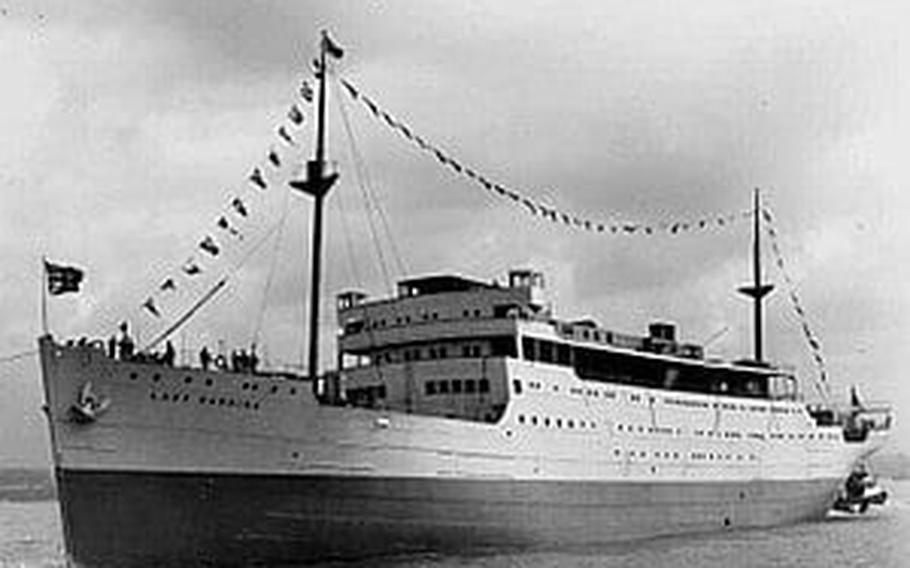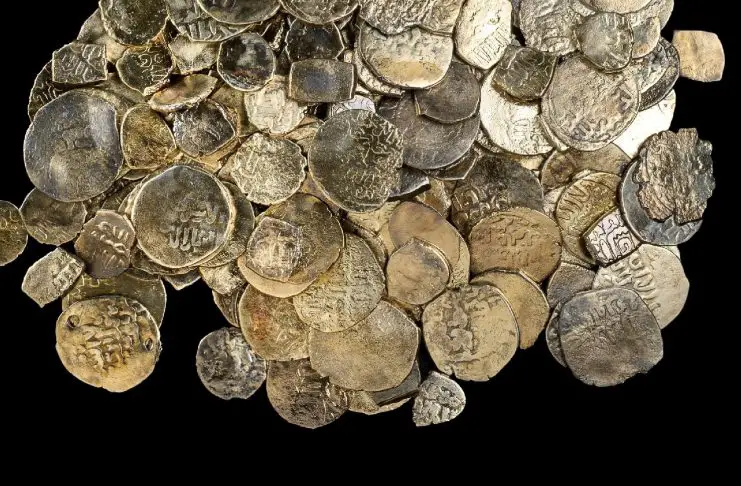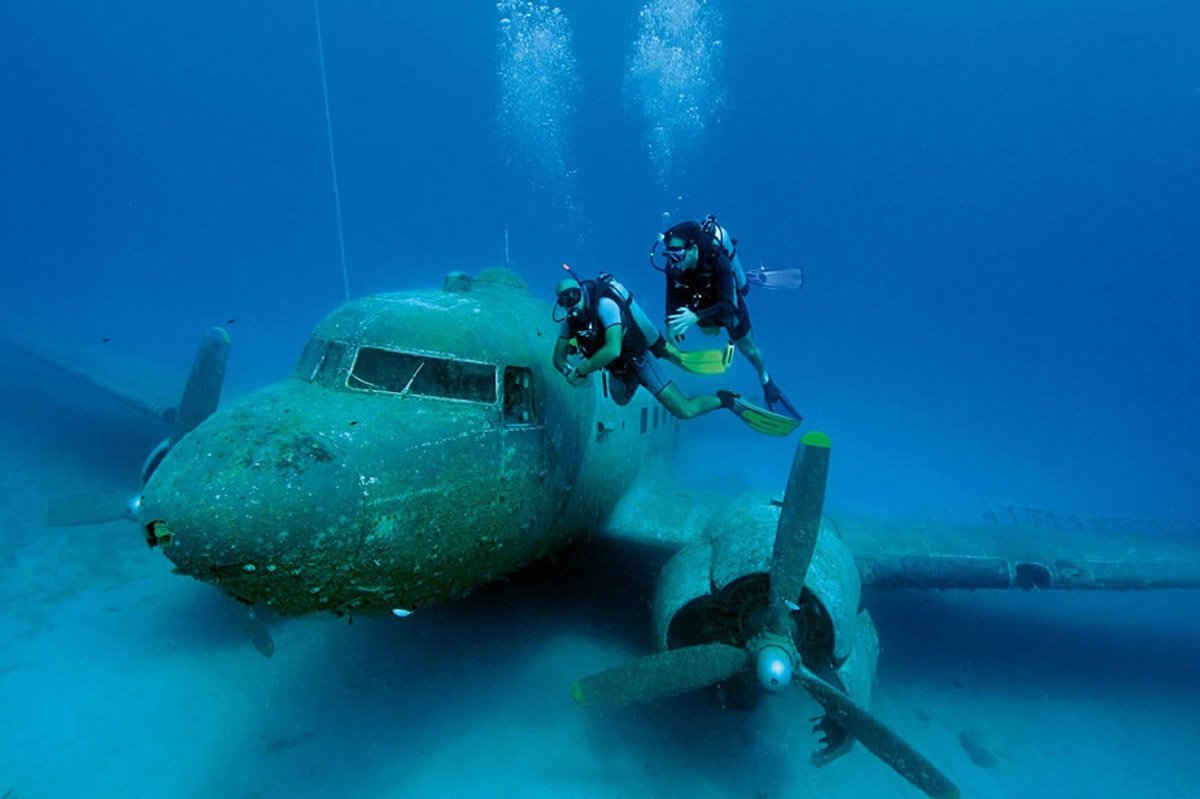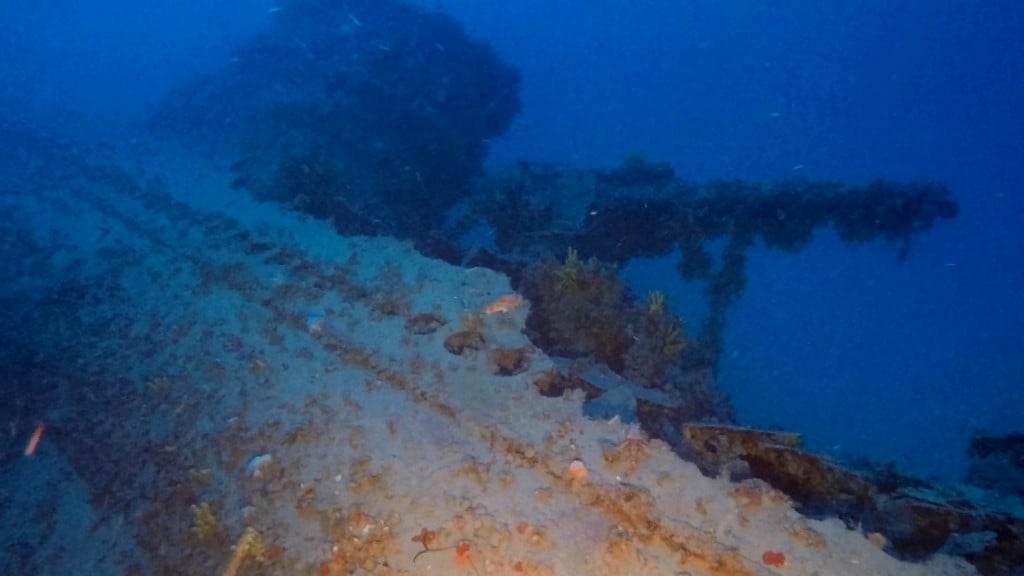HOT NEWS !
Stay informed on the old and most recent significant or spectacular
nautical news and shipwreck discoveries

-
WWII shipwreck killed 250 off NC coast
- On 06/01/2022
- In World War Wrecks
- 0 comments

From Mark Price - The Charlotte Observer
The Graveyard of the Atlantic holds many secrets, but few have a story as haunting as the sinking of the Lady Hawkins — a Canadian “luxury liner” that disappeared off the North Carolina coast with about 250 people.It happened 80 years ago this month, and the mystery is not how the ship sank — but where.
The Lady Hawkins was torpedoed by a German U-boat submarine in 1942, and its location remains unknown, despite the availability of high-tech search and seafloor mapping equipment. It’s as if an entire cruise ship — and two lifeboats full of people — simply vanished.
Finding the wreck is a fantasy shared by war historians in both the United States and Canada, but maritime researchers say there is a good reason no one has ever gone looking for the Lady Hawkins.
And it has a lot to do with what happened that January morning in 1942, when one calamity after another befell the passengers and crew.
Only 71 of the 322 people aboard the Lady Hawkins survived the sinking, Uboat.net reports. Some counts put the death toll as high as 258. The ship was unescorted and highly vulnerable when it encountered a German U-boat 150 miles offshore, somewhere between Cape Hatteras and Bermuda, historians say.
At 7:43 a.m. on Jan. 19, 1942, the U-66 surfaced just over 100 yards away and fired the first torpedo, which damaged “three of her six lifeboats,” according to Civilians and Wars at Sea.
“The Lady Hawkins shuddered under the impact. ... Her forward mast crashed,” Time magazine reported. “Over on her side careened the 7,988-ton liner. Passengers and crew tumbled into the sea.
A second torpedo exploded in the Lady Hawkins’ engine room. “One lifeboat got away,” the outlet reported. “Somehow 76 people, some in night clothes, hair matted with oil, managed to scramble into it or were pulled up from the sea. It was built to carry only 63. Jammed in so tightly that they could not sit down.”
Two other lifeboats also managed to launch, but the boats and their occupants were never found, according to Civilians and Wars at Sea.
-
35-year mission to find a gold-laden shipwreck
- On 03/01/2022
- In Treasure Hunting / Recoveries
- 0 comments

By Mike White - Stuff
Bill Day has spent 35 years and millions of dollars trying to find one of the world’s most famous shipwrecks – the gold-laden General Grant.The ship struck the Auckland Islands in 1866 and has attracted pirates, treasure hunters and adventurers ever since. Next week, Day leaves from Bluff on his fifth, and final, expedition to discover the wreck. Mike White meets the man who might finally solve the riddle of the General Grant’s gold.
It was a rare and welcome thing – a calm day in the Auckland Islands, a place notorious for being the storm-slashed graveyard of ships and sailors.
It was January 1986 and Bill Day had just slithered back on board an inflatable boat after a fruitless dive trying to find the most famous of these wrecks, the General Grant. He perched on the boat’s edge, admiring the cove they were in, a waterfall tumbling off one edge, a neat archway piercing a peninsula.
“Isn’t it a pity wrecks don’t go down in places like this,” he lamented to the boatman.
Minutes later, fellow diver Willie Bullock broke the surface clutching a lead weight old ships used to measure the water’s depth. “There’s a bit of s..t down there,” Bullock spluttered.
Day couldn’t believe his ears or luck – an unknown wreck in a beautiful location, which fitted the description of where the General Grant sank with a fortune in gold. He flicked on his mask and fins, and rolled back into the water.
As the bubbles cleared in front of his mask and he dived towards the seabed, Day was already thinking that maybe they’d finally solved the mystery of the General Grant that had confounded and eluded so many, for so many years.
The General Grant had set sail from Melbourne in May 1866, bound for England with 83 crew and passengers on board. It was a 180’ square-rigged sailing ship, built in Maine two years before, and carrying a cargo including wool and skins. But it also carried 2576 ounces (73kg) of gold, probably in bars and sovereigns.
And on top of that, many of the passengers were miners returning home with small fortunes in gold, scraped and scrabbled from the unforgiving earth of Victoria’s goldfields. On the evening of May 13, 10 days after setting sail, the General Grant’s captain was alarmed to hear a cry from the masthead that land had been sighted dead ahead, and altered course.
Half an hour later came the same chilling cry.
-
Treasures from ancient shipwrecks
- On 25/12/2021
- In Underwater Archeology
- 0 comments

From Heritage Daily
Underwater archaeologists from the Israel Antiquities Authority (IAA) have recovered treasures from the survey of two shipwrecks off the coast of Caesarea in Israel.
The survey was conducted by the IAA’s Marine Archaeology Unit, which found the remains of two wrecked hulls and cargoes scattered in shallow depths of around 4 metres along the sea floor.
A spokesperson for the IAA said: “The ships were probably anchored nearby and were wrecked by a storm. They may have been anchored offshore after getting into difficulty or fearing stormy weather, because shallow open water outside of a port is dangerous and prone to disaster.”
The shipwrecks date from the Roman and Mamluk periods some 1700 and 600 years ago, in which the researchers recovered a range of artefacts and rare personal items of the shipwrecked victims.
The team found hundreds of silver and bronze Roman coins from the mid-third century AD and a large hoard of 14th century silver coins from the Mamluk period, including a large amount of smaller ribbon cut like pieces.
Other finds include a bronze figurine in the form of an eagle, a figurine of a Roman pantomimus, bronze bells, pottery vessels, an inkwell and numerous metal items from the hull of the ship such as bronze nails, lead pipes from a bilge pump, and pieces of a large iron anchor.
Full story... -
Ex-treasure hunter, Tommy Thompson, remains jailed
- On 12/12/2021
- In Illegal Recoveries
- 0 comments

From CBS News
A former deep-sea treasure hunter is preparing to mark his sixth year in jail for refusing to disclose the whereabouts of 500 missing coins made from gold found in an historic shipwreck. Research scientist Tommy Thompson has been held in contempt of court since Dec. 15, 2015, for that refusal.He is also incurring a daily fine of $1,000. Thompson's case dates to his discovery of the S.S. Central America, known as the Ship of Gold, in 1988. The gold rush-era ship sank in a hurricane off South Carolina in 1857 with thousands of pounds of gold aboard, contributing to an economic panic.
Despite an investors lawsuit and a federal court order, Thompson, 69, still won't cooperate with authorities trying to find those coins, according to court records, federal prosecutors and the judge who found Thompson in contempt.
Thompson says he's already said everything he knows about the coins. Thompson pleaded guilty in April 2015 for his failure to appear for a 2012 hearing and was sentenced to two years in prison and a $250,000 fine.
But Thompson's criminal sentence has been delayed until the issue of the gold coins is resolved. After a federal judge ordered Thompson in 2012 to appear in court to disclose the coins' whereabouts, Thompson fled to Florida where he lived with his longtime female companion at a hotel where he was living near Boca Raton.
U.S. marshals tracked him down and arrested him in early 2015. Federal law generally limits jail time for contempt of court to 18 months. But a federal appeals court in 2019 rejected Thompson's argument that that law applies to him, saying his refusal violates conditions of a plea agreement.
-
Underwater history : 255 artifacts found in Turkish seas
- On 27/11/2021
- In Ancien Maritime History
- 0 comments

From Daily Sabah
The underwater archaeological excavation and research ventures of Turkey, which has a coastline of approximately 8,300 kilometers (5,157 miles), were started by foreign teams with the work at the Bronze Age Gelidonya Shipwreck, near the Finike district of Antalya province on the Mediterranean coast, in 1960.Turkish scientists and divers have continued to bring important cultural heritage up from the depths of the blue waters ever since.
While the excavations carried out in Yassıada in 1967-1969, in glass wreck salvaged from the Serçe harbor in 1979, and in the Uluburun Shipwreck off Kaş in 1984 constitute important milestones of Turkish underwater archaeology, a total of 10 underwater archaeological excavations were also conducted this year in the country.
As part of the archaeological underwater research, 255 artifacts have been handed over to Turkish museums so far.
The wreckage of the world's oldest trade ship from the Bronze Age contains works of art from the Archaic period and features the only statue examples found in the Mediterranean. The Ottoman shipwreck, which includes findings that will illuminate the Ottoman navy, is among the important discoveries of the latest archaeological excavations.
Efforts are also underway to establish underwater archaeology museums on the coasts of Turkey's seas so that the artifacts that have been discovered in the scientific, underwater studies can be exhibited on site.
Harun Özdaş, excavation head of Turkey’s Shipwreck Inventory Project, spoke with Anadolu Agency (AA) about his experience in underwater excavations and research.
Özdaş, who is also an archaeology professor at the Institute of Marine Science and Technology at Izmir-based Dokuz Eylul University, said that shipwrecks lie at depths varying between 30-60 meters (98-196 feet) and each meter descended during the dive is a journey to the past.
-
$250,000 for a visit to the Titanic shipwreck site
- On 25/11/2021
- In Famous Wrecks
- 0 comments

By Lauren Harte - Belfast Live
A new expedition to the wreck of the Titanic has been announced for summer 2022, but it comes at a hefty price.Only around 250 people have glimpsed the wreckage since it was discovered on the seabed in 1985, but a small group will make the epic two-mile journey to the site on the ocean floor next year.
Oceangate Expeditions, which offers underwater expeditions across the world, has announced its second annual trip to the ship's final resting place. It will see ‘mission specialists,’ along with researchers, survey the vessel up close from inside the company’s submersible Titan.
The group of citizen explorers will travel 12,500ft beneath the North Atlantic Ocean to survey the famous Belfast-built liner that sank in April 1912.
The Titanic Expedition is conducted as a series of eight-day missions in May and June but each seat now costs $250,000 – a $125,000 increase on last year. OceanGate Expeditions Mission Specialist, Aaron Newman said of the 2021 trip: "It was something out of Discovery Channel or National Geographic. It was very surreal and amazing.
"This is one of the most interesting and unique experiences I have ever had. Less than around 200 people have ever been down to the Titanic and seen the wreck in 110 years."
-
Batavia shipwreck revealing new information
- On 23/11/2021
- In Conservation / Preservation
- 0 comments
By Natasha Harradine - ABC Mid West & Wheatbelt
The Batavia shipwreck is revealing new details about the Dutch master shipbuilders of the 1600s. The ship sank off the coast of Western Australia on its maiden voyage in 1629.
In the 1970s it was lifted from the sea bed and is now displayed at the WA Maritime Museum in Fremantle. It is the only surviving 17th-century ship from the Dutch East India Company.
Lead author, associate professor Wendy van Duivenvoorde from Flinders University, said the vision of the WA Museum to lift and conserve the ship had created an international historic record for tree-ring studies.
"The Batavia holds basically the only records that we have today that can provide us with information about what the Dutch were doing with their timber imports," she said.
Dr van Duivenvoorde said the researchers were able to take more than 100 samples from the timber hull.
"These are really beautiful oak that were easily 300 years old," she said. "I think the oldest tree ring that we have found in a plank comes from a tree that started growing in 1342, and I think from a frame 1340 or so."
She said a ship like the Batavia would use at least 700 trees. Dr van Duivenvoorde said the master shipwrights of the 1600s were very selective in the timber used, with Baltic oak preferred for the hull, which sat below the waterline.
-
Italian WWII submarine wreckage discovered off Mykonos
- On 23/11/2021
- In World War Wrecks
- 0 comments

By Tasos Kokkinidis - Greek Reporter
A team of Greek divers has discovered earlier in the week the wreckage of an Italian submarine that was sunk by the Allied forces in 1941 off Mykonos.The “Jantina,” which sank on July 5 from the torpedoes of the British submarine HMS Torbay, lay at the bottom of the Aegean without anyone knowing its exact location for 80 years.
Kostas Thoctarides, the leader of the team who located Jantina at a depth of 103 meters (338 feet) off Mykonos, told the Athens Macedonia News Agency (AMNA) that he knew that the wreckage was in the area, but “we did not know exactly where.”
“It’s fascinating, you don’t come across a submarine wreckage every day, it’s a journey through history,” he said. The detection was made possible thanks to the submarine remote-controlled vehicles available to Thoctarides team in the context of inspections of underwater projects, such as pipelines and cables.
Thoctarides, a naval history enthusiast and author, has discovered four modern shipwrecks at Mykonos, Skiathos, Kefalonia, and the Saronic Gulf. He says that only a portion of shipwrecks has been located in the Greek seas.
“My estimate is that a quarter has been identified in total,” he said, based on his shipwreck record after years of study. “Greece is a country with a very important naval history. There is historical wealth in every region,” he added.